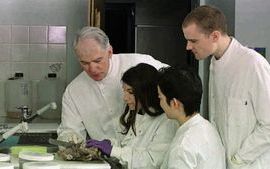- Published:
- 21 July 2025
- Author:
- Dr Bernie Croal
- Read time:
- 7 Mins

A lot has been happening in the world of healthcare and politics since the last Bulletin. And politics clearly has a profound impact on the first.
The UK Labour government has now been in office for a year, and they have been understandably very busy. The Darzi review highlighted how bad healthcare has become. This was followed by a multitude of other reviews, reports and action plans from across the 4 nations of the UK. The most significant of these is the recently published 10-Year Health Plan for England.
The contents of the plan have been trailed for many months, so there were no big surprises. The 3 shifts to community, prevention and digital are seen as essential for the NHS to break the current gridlock, reduce waiting lists and remain viable into the future – notice was served by the Health Secretary, Mr Wes Streeting, when he said “The NHS must modernise or die”.
The great difficulty, of course, is that the plan does not come with any new money, and increases in revenue budget for the foreseeable future remain sub-inflationary. Nor does it come with the promise of a larger workforce – some additional specialty training posts have been promised, but with no budget to support them. Only specialties that can attract direct Trust funding are likely to see new training posts go ahead – pathology will likely miss out.
All is not lost, though. The plan clearly identifies the direction of travel and with it come many opportunities. For pathology, frequently forgotten, we need to ensure that everything we do aligns directly to the plan, with the need for additional investment and workforce clearly identified.
The shift to community
The 10-Year Health Plan looks to expand community-based services. This neighbourhood healthcare approach will depend heavily on pathology services and will result in increased demand on both central testing and testing done nearer the patient. This edition of the Bulletin focuses on community and point-of-care testing (POCT), which now covers testing done in neighbourhood clinics, GP practices and even in patients’ homes.
From a pathology perspective, it will be vital that such POCT is appropriate, safely delivered and cost-effective. Pathology’s role in this is vital and provides an opportunity to ensure appropriate investment is made, not just to the capital elements but also to ongoing revenue support costs. POCT technology is massively improving, opening many potential new applications – not all of them will be worthwhile or affordable, so pathology needs to be a part of decision-making around appropriateness, procurement, implementation, quality and service delivery.
The shift to prevention
Pathology is also vital to prevention. Many of our tests and screening programmes can directly affect early diagnosis and provide a therapeutic window of opportunity to be acted on. Vaccination programmes need a huge boost, especially as we see a loss of trust among the public, largely fuelled by social media and conspiracists – the recent loss of herd immunity for preventable diseases such as measles, with child deaths occurring once again, is so tragic. Many of us in pathology are also involved in direct patient-facing services, such as cardiovascular risk, diabetes, obesity and hypertension. The envisaged expansion of these services in the community settings will need much pathology input.
The shift to digital
The headline coming out of the shift to digital is, of course, the aim for a single electronic patient record (EPR) and a single NHS app – the latter being a one-stop-shop for patients to access their own healthcare records, book appointments and order supplies. Pathology needs to be part of this but, given the lack of standardisation and interoperability, pathology currently sits outside of this venture. Third-party screen dumps and pathology raw text from GP systems is not good enough and represents a significant patient safety risk.
So, we have a great opportunity to once and for all design a single pathology test messaging system that will allow pathology test data to populate future EPRs and the NHS app in a consistent way. Functional laboratory information management systems and order comms systems, with full roll-out of digital pathology, will also play an important role. This will enable much-needed diagnostic stewardship strategies and bring the potential for AI algorithms to alter what we do and what happens to patients. AI will be important – it will help us, but not replace us.
Overall, the 10-Year Health Plan for England outlines a clear direction for services to take. The background of huge debt, a workforce crisis, no additional funding and the lack of an implementation plan gives huge cause for concern – but maybe this is as good as it gets. As pathologists, ensuring that everything we do in future aligns to the plan may allow gains to be made, creating some turning space and eventually allowing us to deliver the objectives. Meanwhile, highlighting every challenge, obstacle, unmet need, workforce issue and funding gap, both capital and revenue, will give pathology a shot at not just the small uplifts promised, but also the existing NHS budget, which looks like is also open for new bids.
Huge concerns continue to grow over workforce shortages across many of our disciplines. These are now affecting service delivery and patient safety. A 40% vacancy rate amongst paediatric and perinatal pathologists has led to service collapse in many parts of the UK. Interim support measures are now failing. Meanwhile, trainee numbers coming through are not going to improve the situation.
The College Workforce Strategy and recent census have now begun to build some very useful data. The first workforce census spotlight has been published and reveals growing pressures on pathology, with key concerns around retirements, working patterns and sustainability of pathology services. In particular:
- 47% of pathologists are aged 50 and over, suggesting a potential retirement cliff edge within the next decade
- 60% of UK-wide consultants say that in a typical week they work beyond the number of hours stated in their contract
- 78% of pathologists do not believe current staffing levels are adequate to ensure long-term stability of pathology services and to meet growing demand.
The College has launched its Patient Safety Steering Group (PSSG), with the first meeting held at the end of May 2025. The PSSG will guide initiatives that use national data to identify risks, improve diagnostic accuracy and support the development of safety-focused projects. Through collaborative leadership and shared learning, the group will help ensure pathology continues to deliver safe, effective care.
Strengthening safety systems is critical to reducing diagnostic errors, supporting better outcomes and maintaining public trust. The PSSG reinforces the College’s role in leading the profession during a time of growing complexity in healthcare. It comes at a time when NHSE continues to contract, with the recent announcement of the axing of 201 quangos, many of which were focused on patient voices and safety.
The College Annual Dinner is a very important networking event, which we held last month. We were able to celebrate and promote all things pathology to our audience of College fellows and staff, politicians, senior Department of Health and Social Care and NHSE representatives, 4 nation representatives , other medical royal college presidents and the media.
It is held at the College, organised and delivered by College staff, thereby keeping costs to a minimal marginal level. We were also able award 5 much-deserved achievement awards on the night.
Volunteering for the College remains as important as ever. With full job plans, busy lives and difficulties in getting leave, we recognise that this is increasingly difficult. The 4 Chief Medical Officers of the 4 nations of the UK have recently issued an updated letter that can be used to assist local requests for permission to participate in College work. The College can also assist with a supportive letter, if needed.
Clearly in the UK we are in the midst of very challenging times for politics, the economy and healthcare. However, opportunity still exists to make things better. The pathology profession needs to strategically approach the coming years to ensure we can make the best play for the limited funds available, funds that will be so crucial to the future of pathology services.
We must also pause, however, to remember that there are significant conflicts taking place across the world, with many healthcare workers caught up in the danger and working in unbearable conditions. Our thoughts are with them all.
Read next
Insights from the Member Survey 2024
17 July 2025




